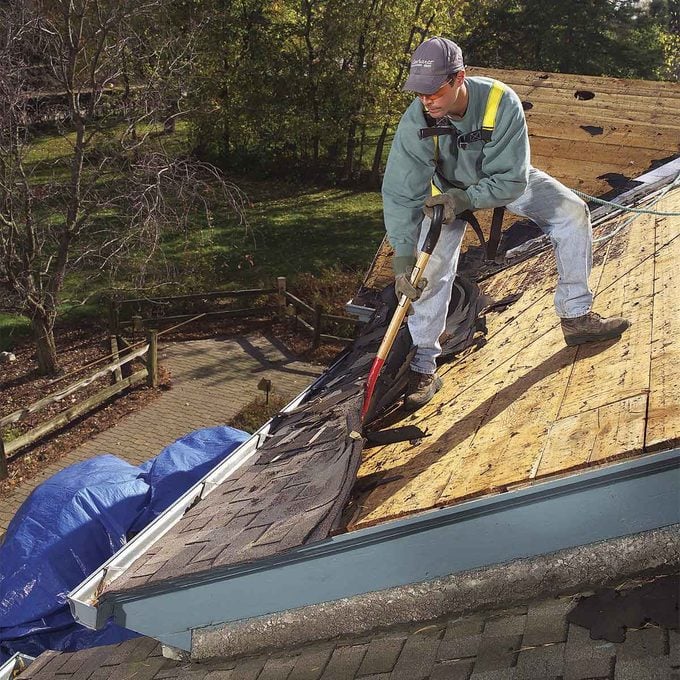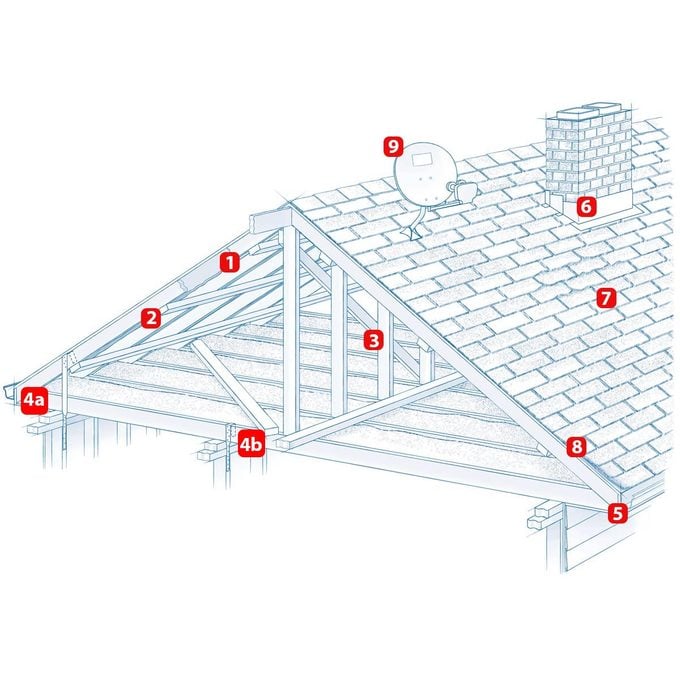Severe Weather Guide: How to Reinforce Your Roof
Updated: Mar. 10, 2022
When severe weather hits, you're going to want to make sure your roof's in tip top shape. Here are some do-it-yourself measures that will help keep the water out and the roof intact.
Reinforce Your Roof

A properly constructed roof in areas subject to high winds has trusses attached to walls with hurricane tiedowns, properly nailed sheathing, and heavy-duty shingles. These are usually accomplished during a complete re- roofing. (Consult your local code officials for details.) However, even if you’re not planning a total re-roofing, there are do-it-yourself measures that will help keep the water out and the roof intact.
Reinforce the Trusses

1. Apply construction adhesive
Apply construction adhesive along the edge of the truss to strengthen the connection to the plywood roof deck. Put on the adhesive as you would caulk.
2. Stiffen Trusses
Stiffen trusses by joining them with 2x4s running from one end of the house to the other.
3. Brace gable ends
Brace gable ends with diagonal 2x4s.
4a and 4b. Connect the trusses to walls
Connect trusses to walls with hurricane tiedowns. Strap down trusses wherever you can get access, either from the attic, behind soffit panels or through interior walls. Attach straps at inside walls if nothing else is accessible.
Note: Installing metal tie-downs in an existing roof can be very difficult and is best done during a complete roof replacement.
5. Clean out gutters
Clean out gutters and downspouts so water can quickly drain off the roof.
6. Repair and caulk flashing
Repair and caulk flashing at roof penetrations, dormer walls, skylights and chimneys—anywhere water could get in.
7. Check for loose or damaged shingles
Check for loose or damaged shingles, especially at the eaves, and glue down any that need it with dabs of roofing cement along the front edge.
Learn how here.
Note: Metal and clay tile roofs should be inspected and repaired by pros.
8. Lift shingles or underlayment
If you can lift shingles or underlayment along gutters, eaves or valleys, squirt a line of roofing cement underneath.
9. Remove TV or satellite antennas
Remove TV or satellite antennas. Take off roof turbines and fasten galvanized flashing with screws to cover the hole.
Hire Smart
According to government investigators, most roofing failures during hurricanes have been due to poorly installed shingles. Shingles that had been stapled instead of nailed, nailed in the wrong spots, attached with only two nails, or applied by a shortcut method called “racking” (where shingles are applied in a straight line up the roof instead of horizontally or diagonally) were more likely to fail. Roofs with shingles that had been correctly installed held up substantially better.
For more roof installation and repair tips click here.
Information for this post was made in collaboration with Lowes for a severe weather guide.